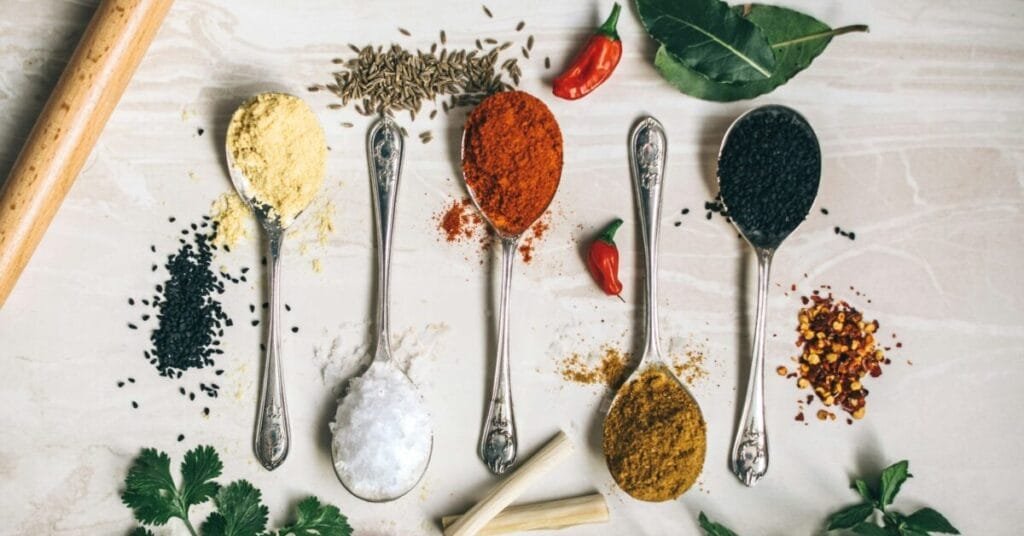Discover the Miraculous Benefits of Orthosiphon aristatus (Cat’s Whiskers/Java Tea): Nature’s Hidden Gem
Dear readers, have you ever stumbled upon a plant so extraordinary that it seems to hold the secrets to numerous health benefits? Allow me to introduce you to Orthosiphon aristatus, affectionately known as cat’s whiskers or Java tea. This unassuming herb has been a cornerstone of traditional medicine in Southeast Asia, and today, we’re diving deep into its wonders, potential side effects, and interactions. Buckle up; this journey might just change your health regimen forever!

A Glimpse into Orthosiphon aristatus
Orthosiphon aristatus is a perennial herb native to the tropical regions of Southeast Asia and Australia. Its unique, whisker-like white and purple flowers have earned it the nickname “cat’s whiskers.” Traditionally, it’s been brewed into teas to address ailments ranging from kidney disorders to diabetes. But what makes this plant so special?
The Power-Packed Phytochemical Profile
This botanical marvel is rich in bioactive compounds:
- Phenolic Acids: Rosmarinic acid and caffeic acid are potent antioxidants that combat oxidative stress.
- Flavonoids: Sinensetin and eupatorin are known for their anti-inflammatory and antimicrobial properties.
- Diterpenes: Orthosiphols A and B contribute to the plant’s therapeutic effects.
- Saponins and Terpenoids: These compounds further enhance its medicinal properties.
Unveiling the Health Benefits
- Diuretic and Kidney Health Orthosiphon aristatus is renowned for its diuretic properties, promoting increased urine output. This aids in flushing out toxins and may prevent kidney stone formation by inhibiting calcium oxalate crystallization.
- Antioxidant and Anti-inflammatory Effects The presence of rosmarinic acid enables the plant to scavenge free radicals, reducing oxidative stress. This action is beneficial in mitigating inflammation, potentially offering relief in conditions like arthritis.
- Antihypertensive Activity By promoting diuresis and vasodilation, Orthosiphon aristatus may aid in lowering blood pressure, making it a natural ally against hypertension.
- Antimicrobial Properties Ethanol extracts of the plant have demonstrated inhibitory effects against bacteria such as Staphylococcus aureus and fungi like Candida albicans, supporting its traditional use in treating infections.
- Antidiabetic Potential Animal studies have shown that Orthosiphon aristatus can reduce blood glucose levels by enhancing insulin sensitivity, indicating potential benefits for diabetes management.
- Hepatoprotective and Anticancer Effects Preliminary research suggests that the plant may protect against liver damage and induce apoptosis in cancer cells, highlighting its potential as a complementary therapy in oncology.
Safety Profile and Potential Side Effects
While Orthosiphon aristatus is generally considered safe, it’s essential to be aware of potential side effects:
- Electrolyte Imbalance: Prolonged use may lead to hypokalemia (low potassium levels) due to its diuretic effect.
- Dehydration: Excessive diuresis can result in dehydration; ensure adequate fluid intake.
- Gastrointestinal Distress: Some individuals might experience nausea or diarrhea.
- Allergic Reactions: Rare cases of hypersensitivity have been reported.
Notably, there isn’t enough information available to know if Java tea is safe during pregnancy and breastfeeding. Additionally, individuals with fluid retention (edema) due to heart or kidney problems should avoid using Java tea as “irrigation therapy.”
Potential Drug Interactions
Orthosiphon aristatus may interact with certain medications:
- Lithium: Java tea might have an effect like a water pill or “diuretic,” potentially decreasing how well the body eliminates lithium and leading to serious side effects.
- Antihypertensive Drugs: Java tea seems to decrease blood pressure. Taking it alongside medications for high blood pressure might cause blood pressure to drop too low.
Conclusion: Embracing Nature’s Bounty with Caution
Orthosiphon aristatus, with its rich history and array of potential health benefits, stands as a testament to nature’s healing prowess. However, as with any herbal remedy, it’s crucial to approach its use with informed caution. Limited clinical data and possible interactions with conventional medications necessitate consulting healthcare providers before incorporating it into your wellness routine.
Dear readers, have you ever tried Java tea or experienced its benefits firsthand? Share your stories and insights in the comments below! Let’s embark on this journey of natural wellness together.
Disclaimer: This article is for informational purposes only and does not substitute professional medical advice. Also, this article consolidates preclinical findings; clinical applications require professional guidance.
Key Notes to consider:
- Orthosiphon aristatus is often referred to as Orthosiphon stamineus in scientific literature.
- While preclinical studies dominate, clinical trials in humans remain limited.
References:
- Akowuah, G. A., Zhari, I., & Mariam, A. (2005). Analysis of urinary metabolites of Orthosiphon stamineus leaf extracts in Sprague-Dawley rats. Food Chemistry, 91(1), 1–6. https://doi.org/10.1016/j.foodchem.2004.05.054
- Focuses on diuretic effects and kidney health.
- Yam, M. F., Basir, R., Asmawi, M. Z., & Ismail, Z. (2007). Antioxidant and hepatoprotective effects of Orthosiphon stamineus Benth. standardized extract. The American Journal of Chinese Medicine, 35(01), 115–126. https://doi.org/10.1142/S0192415X07004670
- Explores antioxidant and liver-protective properties.
- Mohamed, E. A. H., Siddiqui, M. J. A., Ang, L. F., Sadikun, A., Chan, S. H., Tan, S. C., … & Asmawi, M. Z. (2012). Potent α-glucosidase and α-amylase inhibitory activities of standardized 50% ethanolic extracts and sinensetin from Orthosiphon stamineus Benth as anti-diabetic mechanism. BMC Complementary and Alternative Medicine, 12(1), 1–14. https://doi.org/10.1186/1472-6882-12-176
- Examines antidiabetic potential.
- Hossain, M. S., Urbi, Z., Sule, A., & Hafizur Rahman, K. M. (2014). Orthosiphon stamineus Benth: A traditional medicinal plant with diverse pharmacological activities. Journal of Ethnopharmacology, 153(2), 329–343. https://doi.org/10.1016/j.jep.2014.02.035
- Comprehensive review of pharmacological benefits.
- Sriplang, K., Adisakwattana, S., Rungsipipat, A., & Yibchok-Anun, S. (2007). Effects of Orthosiphon stamineus aqueous extract on plasma glucose concentration and lipid profile in normal and streptozotocin-induced diabetic rats. Journal of Ethnopharmacology, 109(3), 510–514. https://doi.org/10.1016/j.jep.2006.08.016
- Investigates antihyperglycemic and lipid-lowering effects.
- Ong, Y. S., Saiful Yazan, L., Ng, W. K., Abdullah, R., Mustapha, N. M., & Sapuan, S. (2018). Thymoquinone-rich fraction from Orthosiphon stamineus induces cytotoxicity in human breast cancer cells. BMC Complementary and Alternative Medicine, 18(1), 1–10. https://doi.org/10.1186/s12906-018-2250-5
- Discusses anticancer activity.
Read Alternative medicine articles, click here.




